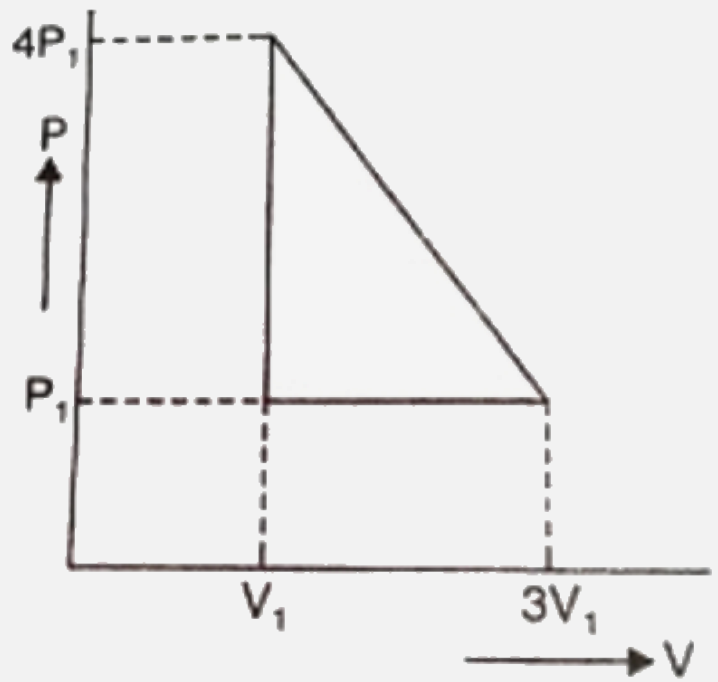An ideal gas is carried through a thermodynamic cycle consisting of two isobaric and two isothermal processes as shown in figure. Show that the net work done in the entire cycle is given by the equation. Wnet=p1(V2−V1)Inp2p1

The correct Answer is:A
Along the process CD apply,
pV= constant and find VC
Similarly along path AB, again apply,
pV= constant and find VB.
Now, Wnet=WAB+WBC+WCD+WDA
=nRTAIn(VBVA)+pB(VC−VB)
+nRTCIn(VDVC)+pD(VA−VD)
Further, nRTA=pAVA
and nRTC=pCVC
Topper's Solved these Questions
- LAWS OF THERMODYNAMICSBOOK - DC PANDEYCHAPTER - LAWS OF THERMODYNAMICSEXERCISE - Level 2 Single Correct
27 Videos
- LAWS OF THERMODYNAMICSBOOK - DC PANDEYCHAPTER - LAWS OF THERMODYNAMICSEXERCISE - Level 2 More Than One Correct
6 Videos
- LAWS OF THERMODYNAMICSBOOK - DC PANDEYCHAPTER - LAWS OF THERMODYNAMICSEXERCISE - Level 1 Objective Questions
1 Videos
- LAWS OF MOTIONBOOK - DC PANDEYCHAPTER - LAWS OF MOTIONEXERCISE - Medical entrances gallery
39 Videos
- MAGNETIC EFFECT OF CURRENT AND MAGNETISMBOOK - DC PANDEYCHAPTER - MAGNETIC EFFECT OF CURRENT AND MAGNETISMEXERCISE - Integer type Questions
10 Videos
Similar Questions
P – V graph for a cyclic process is shown in figure . Work done is given by

View SolutionOne mole of an ideal gas is carried through a thermodynamics cycle as shown in the figure. The cycle consists of an isochoric, an isothermal and an adiabatic process. Find the adiabatic exponent of the gas.

View Solution
Knowledge Check
Helium gas goes through a cycle ABCDA (consisting of two isochoric and isobaric lines) as shown in figure Efficiency of this cycle is nearly: (Assume the gas to be close to ideal gas)
 A15.4%B9.1%C10.5%D12.5%
A15.4%B9.1%C10.5%D12.5%The figure shows P - V diagram of a thermodynamic cycle

The work done in the cycle isA2P0V0B3P0V0CP0V0D6P0V0An ideal gas is taken around the cycle ABCA as shown in P-V diagram. The net work done by the gas during the cycle is equal to :
 A12P1V1B6P1V1C5P1V1DP1V1
A12P1V1B6P1V1C5P1V1DP1V1
An ideal gas is taken around the cycle ABCA as shown in P-V diagram. The net work done by the gas during the cycle is equal to:

View SolutionA gas has been subjected to a cycle of isochoric, isothermal process 1-2-3-4-1 as shown in the figure. The graph for this cycle on P-T diagram is

View SolutionAn ideal gas is taken around the cycle ABCA as shown in P−V diagram. The net work done by the gas during the cycle is equal to:
View SolutionAn ideal gas is taken around the cycle ABCA shown in P−V diagram. The net work done by the gas during the cycle is equal to

View SolutionTwo moles of helium gas are taken over the cycle ABCDA, as shown in the P-T diagram

The net work done on the gas in the cycle ABCDA is :
View Solution
